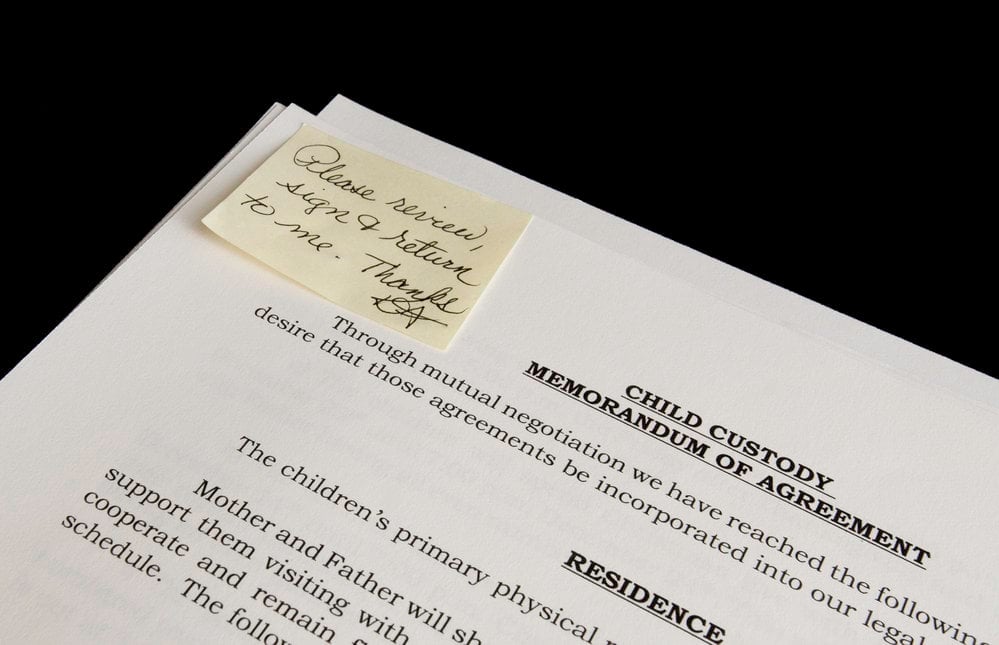Divorce rates have long been a topic of interest and discussion, as they can provide insight into the overall health of a society’s relationships and the institution of marriage. In recent years, interest has turned to examining divorce rates among same-sex couples, with a particular focus on lesbian marriages. This examination can help us understand these relationships’ unique challenges and strengths.
As marriage equality has become more widespread, same-sex couples have been allowed to legalize their unions. This development also means they are now faced with the prospect of divorce, just like their heterosexual counterparts. Data on lesbian divorce rates are starting to emerge, shedding light on trends and patterns related to the dissolution of these marriages.
This article explores the divorce rates among lesbian couples, delving into the factors contributing to these statistics and comparing them to the divorce rates of heterosexual couples. Through carefully analyzing the available research, we seek to understand better the intricacies of lesbian relationships and what may lead to the decision to end a marriage within this demographic.
Lesbian Divorce Rates Data
National Center for Health Statistics
According to data from the National Center for Health Statistics, divorce rates have been steadily declining in the United States for heterosexual couples. This trend, however, does not seem to be the case for lesbian couples, as their divorce rates remained relatively stable.
While same-sex marriage has only been legal across the United States since 2015, several states legalized it earlier, providing data to analyze. The Williams Institute, a leading research institution on sexual orientation and gender identity, has studied this subject in-depth.
Lesbian Couples vs. Heterosexual Couples
Data from various studies indicate that lesbian couples tend to have higher divorce rates than heterosexual couples. The reasons for the higher divorce rates among lesbian couples are multifaceted. They may include societal pressures, fewer barriers to leaving, the stigma of being in a same-sex relationship, and inadequate legal support.
Williams Institute Findings
The Williams Institute has generated the following findings:
- Lesbian couples have higher divorce rates compared to gay male couples and heterosexual couples.
- Legalizing same-sex marriage led to a temporary increase in divorce rates among lesbian couples, which researchers believe is due to the “catch-up” effect of previously unfulfilled demand for legal recognition of relationships.
- Over time, divorce rates for lesbian couples are expected to stabilize and potentially match those of heterosexual couples as societal acceptance and legal support continue to improve.
While the data on lesbian divorce rates is limited due to the relatively recent nationwide legalization of same-sex marriage in the United States, these findings offer important insights into trends and factors affecting the stability of lesbian relationships.
Comparing Divorce Rates
Same-Sex Couples Vs Heterosexual Couples
When examining divorce rates, it is essential to compare the differences between same-sex couples, specifically lesbian and heterosexual couples. Over the years, societal attitudes towards same-sex relationships and legal recognition of these unions have significantly changed.
Research has shown that the divorce rate for same-sex couples tends to be lower than that of heterosexual couples. However, when focusing on lesbian couples, the findings are slightly different. According to multiple studies, lesbian couples have a slightly higher divorce rate than gay male couples but still lower than heterosexual couples.
Numerous factors, such as societal pressures, differences in marriage rates, and the length of the relationship before marriage, might influence divorce rates. Let’s examine the key points from various research findings:
- Marriage rates: Same-sex couples have lower marriage rates compared to heterosexual couples. This might be attributed to limited legal recognition or lesser societal acceptance in certain regions.
- Divorce rate: While the divorce rate is lower for same-sex couples collectively, it is important to differentiate between lesbian couples, gay couples, and heterosexual couples.
| Couple Type | Divorce Rate |
|---|---|
| Lesbian | Slightly Higher |
| Gay (Male) | Lower |
| Heterosexual | Highest |
Handling relationship dynamics and external influences can impact the stability of these relationships. As more countries legalize same-sex marriages and acceptance grows, it will be crucial to evaluate these trends and their effects on divorce rates continuously.
Factors Affecting Lesbian Divorce Rates
Commitment
Commitment plays a significant role in the stability of any relationship, including lesbian marriages. Studies have shown that individuals more committed to their relationships are likelier to stay together. Moreover, commitment levels can be influenced by various factors such as communication skills, personal values, and past relationship experiences. Cultivating a strong foundation of trust and shared values in any marriage is important to maintain commitment levels and reduce the likelihood of divorce.
Rushing into Marriage
Rushing into marriage too quickly can increase divorce rates among lesbian couples. Couples who do not take the time to fully know and understand each other before committing to marriage may face difficulties when facing various challenges that arise in long-term relationships. Couples must invest in quality time together, focus on building a connection, and develop a sense of security before marrying.
While many factors can influence divorce rates among lesbian couples, addressing commitment and taking the time to truly know one’s partner can help reduce the risk of relationship dissolution.
Legal Challenges in Lesbian Divorces
Marital Property
In lesbian divorces, the division of marital property can present unique obstacles. Both parties may have contributed to acquiring assets, such as real estate, vehicles, and household items. Identifying these assets and splitting them equitably may require a detailed analysis of financial records, including bank statements and receipts.
Debts also need to be managed in the divorce process. Couples should obtain credit reports and conduct a thorough review of their liabilities. An equitable division of debts is crucial to prevent future financial issues for both parties.
Alimony
Alimony, or spousal support, may be awarded in a lesbian divorce if one partner has a lower earning potential or sacrifices their career for the relationship. The court considers factors such as earning capacity, the length of the marriage, and the standard of living during the marriage. In some cases, temporary or permanent alimony may be necessary to maintain financial stability for both parties.
Child Custody
Child custody disputes in lesbian divorces can be particularly challenging. Determining legal parenthood may become complicated with the possible involvement of biological parents, adoption, or surrogacy. Courts often prioritize the child’s best interests, considering factors such as emotional bonds, each parent’s ability to provide for the child’s basic needs, and the child’s preferences.
- Legal and physical custody: Courts determine whether one or both parents have legal custody, the authority to make major decisions, and physical custody, which refers to the child’s living arrangements.
- Visitation rights: Non-custodial parents may seek visitation rights to maintain an active presence in their child’s life. Supervised or unsupervised visitations can be arranged, depending on the specific circumstances.
- Modification of custody orders: A change in circumstances, such as relocation or the child’s preference, may require a modification of the initial custody order.
Mediation
Mediation can be a beneficial alternative to traditional litigation for resolving legal challenges in lesbian divorces. This voluntary process allows both parties to work with a neutral third-party mediator to address issues such as property division, alimony, and child custody. Mediation aims to reach an agreement that satisfies the needs and interests of both parties, fostering a cooperative and respectful environment.
- Costs: Mediation can be less expensive than going to court, as legal fees, court costs, and expert witness expenses are minimized.
- Time: Unlike litigation, which might take months or even years to complete, mediation often achieves resolution within a few sessions.
- Confidentiality: Mediation proceedings are confidential, maintaining privacy for both parties involved.
Unique Challenges for Lesbian Couples
Lesbian couples, like any other couples, face some common challenges in their relationships, such as communication, trust, and conflict resolution. However, they also experience some unique obstacles from societal and legal factors.
One major challenge for lesbian couples is the lack of legal recognition in some countries and states. This can lead to difficulties regarding child custody agreements, property division, and access to benefits. As a result, the divorce process can become more complex and challenging for these couples.
Additionally, discrimination against lesbian couples can manifest in various ways, such as limited access to specialized legal services and therapists who understand their unique challenges. This can make it more difficult to navigate the divorce process and find the necessary support.
Regarding children, lesbian couples often have to deal with additional complexities. In some cases, only one woman is the biological mother, which may lead to parental rights and responsibilities disputes. This can become particularly contentious if the couple doesn’t secure a legal adoption or co-parenting agreement. Moreover, societal prejudices may also affect the children, who might experience bullying or discrimination due to their parent’s relationship.
In conclusion, lesbian couples face several unique challenges when divorcing, particularly in legal recognition, discrimination, and child custody. Addressing these issues requires a comprehensive understanding of their obstacles and a supportive network to navigate the process.
Divorce Rates in Different States and Countries
United States
In the US, divorce rates among lesbian couples vary by state. Massachusetts, one of the first states to legalize same-sex marriage, reported a lower divorce rate for lesbians than the national average. Meanwhile, Delaware showed a higher divorce rate among lesbian couples.
- Massachusetts
- Lower divorce rate compared to the national average
- Delaware
- Higher divorce rate among lesbian couples
Other states like Minnesota, New Jersey, and Iowa also report divorce rates among lesbian couples. Although data is limited, it’s essential to consider differences in state laws and socio-cultural factors when comparing these rates.
United Kingdom
In the UK, specifically England, divorce rates for lesbian couples appear to be higher than those of gay male couples. However, it is crucial to note that the overall number of divorces in the UK has declined.
While this information does not provide an exhaustive overview, it offers a glimpse into divorce rates among lesbian couples in different states and countries.
Reasons for Divorce in Lesbian Marriages
Unreasonable Behavior
Unreasonable behavior is a common cause of divorce in lesbian marriages. This can include verbal, emotional, or physical abuse and persistent neglect or controlling behavior. Some couples may have difficulties communicating or working through disagreements without resorting to harmful actions. The imbalance of power within the relationship can lead to the breakdown of the marriage.
Adultery
Another reason for divorce in lesbian marriages is adultery. Although societal views on non-monogamous relationships have shifted, many individuals still believe in a faithful marriage. If one partner has an extramarital affair, it can lead to feelings of betrayal and mistrust within the relationship. This can cause irreparable damage and may result in the couple seeking a divorce.
Infidelity
Infidelity encompasses a broader range of actions than adultery, including emotional affairs and other significant betrayals of trust. In lesbian marriages, these actions can take various forms, such as pursuing intimate relationships outside the marriage or continuously lying about one’s whereabouts or activities. In many cases, infidelity can be more devastating than adultery, as it undermines the foundation of trust and commitment required for a healthy marriage.
In summary, unreasonable behavior, adultery, and infidelity are some of the primary reasons behind divorces in lesbian marriages. These factors contribute to the breakdown of trust and commitment, ultimately leading couples to seek to dissolve their marriage.
Role of Professionals in Lesbian Divorces
Family Law Attorneys
Family law attorneys play a critical role in lesbian divorces. They help navigate the complex legal process and protect their clients’ rights. These attorneys specialize in family law, which includes divorce proceedings, child custody, and property division. They know the unique challenges that lesbian couples face in the legal system, and they work to achieve fair outcomes for their clients.
During the initial stages of the divorce, family law attorneys advise their clients on the options available, such as mediation or collaborative divorce, as well as the litigation process. They help clients understand the potential consequences of each choice and make informed decisions. Moreover, family law attorneys work to gather evidence and present a strong case in court, if necessary.
Legal Professionals
Apart from attorneys, other legal professionals also play a vital role in lesbian divorces. These professionals, such as paralegals, law clerks, and mediators, work alongside attorneys to ensure a smooth and efficient legal process. They contribute their expertise and skills to handle various aspects of the divorce proceedings.
- Paralegals: They assist attorneys by drafting legal documents, conducting research, and organizing case files. Their support helps attorneys focus on developing a strong case strategy and advocating for their client’s interests.
- Law Clerks: These professionals support the legal process by performing administrative tasks and updating case records. They also help attorneys with legal research and preparing for court hearings.
- Mediators: In cases where couples choose mediation or collaborative divorce, mediators facilitate communication between the parties and help them reach agreements on important issues such as property division, child custody, and spousal support. They ensure a neutral and unbiased environment for effective problem-solving.
In conclusion, family law attorneys and other legal professionals play an essential role in lesbian divorces by providing guidance, support, and expertise to facilitate the legal process and ensure fair outcomes for both parties.
Conclusion
Lesbian divorce rates have been discussed and researched for several years. While studies have shown that lesbians experience higher divorce rates than heterosexual marriages, it is important to contextualize these findings within the broader social and legal landscape.
One of the key factors affecting lesbian divorce rates is the accessibility of legal marriage for same-sex couples. In many parts of the world, same-sex marriage has only recently become legal, allowing additional data to be collected and analyzed. However, as societal acceptance varies by region, additional research may be necessary in locales where legislation has yet to catch up.
Furthermore, the relationship dynamics of lesbian couples might differ from heterosexual couples in important ways. For example, communication patterns, societal pressures, and expectations within the relationship are all factors that could contribute to comparably higher divorce rates. Understanding these factors could lead to improved relationship support and counseling services, which can mitigate potential challenges faced by lesbian couples.
In summary, while lesbian divorce rates might be higher when compared to their heterosexual counterparts, it is essential to consider the complex social and legal contexts in which these relationships exist. Further research focusing on diverse groups and different stages of relationship development will help gain a more comprehensive understanding of the factors affecting lesbian divorce rates.
Frequently Asked Questions
What are the divorce rates for lesbian couples?
Lesbian divorce rates vary depending on the country and the study being examined. Research has shown that divorce rates for same-sex female couples may be slightly higher than for same-sex male couples. It is essential to recognize that various factors can contribute to divorce rates, and each couple’s circumstances are unique.
How do lesbian divorce rates compare to heterosexual couples?
Some studies and data sources have suggested that lesbian couples might have a higher divorce rate than heterosexual couples. However, it’s essential not to jump to conclusions based on limited data, as various factors could affect these statistics. Further research on this topic is necessary for more conclusive results.
What are the common reasons for divorce among lesbian couples?
The reasons for divorce among lesbian couples can be similar to those of heterosexual couples, which include:
- Financial issues
- Infidelity
- Lack of communication
- Growing apart
- Changes in personal goals and values
It’s vital to remember that each couple’s experience is different, and reasons for divorce can vary widely among individuals.
Are there specific legal issues related to lesbian divorce?
Legalizing same-sex marriage is a relatively recent development in some countries and states. As a result, the legal system may still be adjusting to accommodate the unique needs of same-sex divorced couples, such as custody arrangements, division of assets, and child support. It’s essential to consult with a knowledgeable attorney in your area for specific guidance.
Can counseling help with preventing lesbian divorces?
Counseling can be beneficial for many couples, regardless of their sexual orientation. In some cases, attending couples therapy or counseling can help lesbian couples address issues and improve communication, potentially reducing the risk of divorce.



